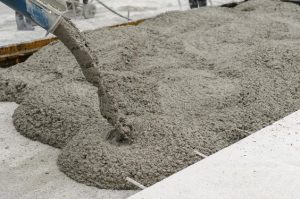Introduction:
Concrete is a widely used construction material known for its strength, durability, and versatility. However, to ensure the longevity and safety of concrete structures, it is crucial to implement rigorous quality control measures throughout the construction process. Quality control measures, such as testing and inspection, play a vital role in identifying potential issues, ensuring compliance with industry standards, and ultimately guaranteeing the durability and safety of concrete structures. In this blog, we will emphasize the significance of quality control in concrete construction and highlight the key measures that should be implemented.
1. Testing of Raw Materials:
The first step in quality control is to test the raw materials used in concrete production. This includes testing the cement, aggregates, water, and admixtures for their quality and compatibility. By conducting thorough tests, such as sieve analysis, moisture content analysis, and chemical composition tests, construction professionals can ensure that the materials meet the required standards and are suitable for producing high-quality concrete.
2. Proportioning and Mixing:
Accurate proportioning and proper mixing of concrete ingredients are crucial for achieving the desired strength and durability. Quality control measures should include regular monitoring of the mixing process, ensuring that the correct water-cement ratio, aggregate gradation, and admixture dosage are maintained. This can be achieved through the use of automated batching and mixing systems, along with periodic sampling and testing of freshly mixed concrete.
3. Fresh Concrete Testing:
Fresh concrete testing is essential to assess its workability, consistency, and setting time. Slump tests, flow tests, and temperature monitoring are commonly employed to ensure that the concrete meets the specific requirements of the project. These tests help identify any potential issues with the mix and allow for adjustments to be made, ensuring that the concrete is properly placed and compacted.
4. Strength and Durability Testing:
Testing the strength and durability of hardened concrete is crucial to ensure its long-term performance. Compressive strength tests, such as cube or cylinder tests, are commonly conducted to assess the concrete’s strength at various ages. Additionally, tests such as permeability tests, chloride ion penetration tests, and shrinkage tests are performed to evaluate the durability and resistance to environmental factors. These tests provide valuable information on the quality of the concrete and help identify any potential weaknesses that could compromise the structure’s integrity.

5. Quality Assurance Inspections:
Regular inspections throughout the construction process are vital for ensuring compliance with design specifications and industry standards. Inspections should cover various aspects, including formwork, reinforcement placement, concrete placement, and curing methods. By conducting thorough inspections, construction professionals can identify any deviations or deficiencies early on and take corrective measures to prevent potential issues.
6. Adherence to Codes and Standards:
Quality control in concrete construction also involves strict adherence to relevant codes and standards. These codes and standards provide guidelines for design, construction, and quality assurance, ensuring that the structures are built to withstand the expected loads and environmental conditions. Compliance with these codes and standards is crucial for ensuring the structural integrity, safety, and longevity of concrete structures.
7. Documentation and Record-Keeping:
Maintaining accurate documentation and record-keeping is an essential aspect of quality control. This includes keeping records of test results, inspection reports, material certifications, and any modifications or changes made during the construction process.
Proper documentation allows for traceability, facilitates quality audits, and serves as a reference for future maintenance or repair work.
Conclusion:
Quality control measures play a vital role in ensuring the durability and safety of concrete structures. By implementing rigorous testing and inspection procedures, construction professionals can identify potential issues early on, make necessary adjustments, and ensure compliance with industry standards and codes. Quality control measures not only enhance the structural integrity of concrete structures but also contribute to their long-term performance, reducing the risk of premature deterioration and costly repairs. By prioritizing quality control, we can create concrete structures that stand the test of time and provide a safe and sustainable built environment.


